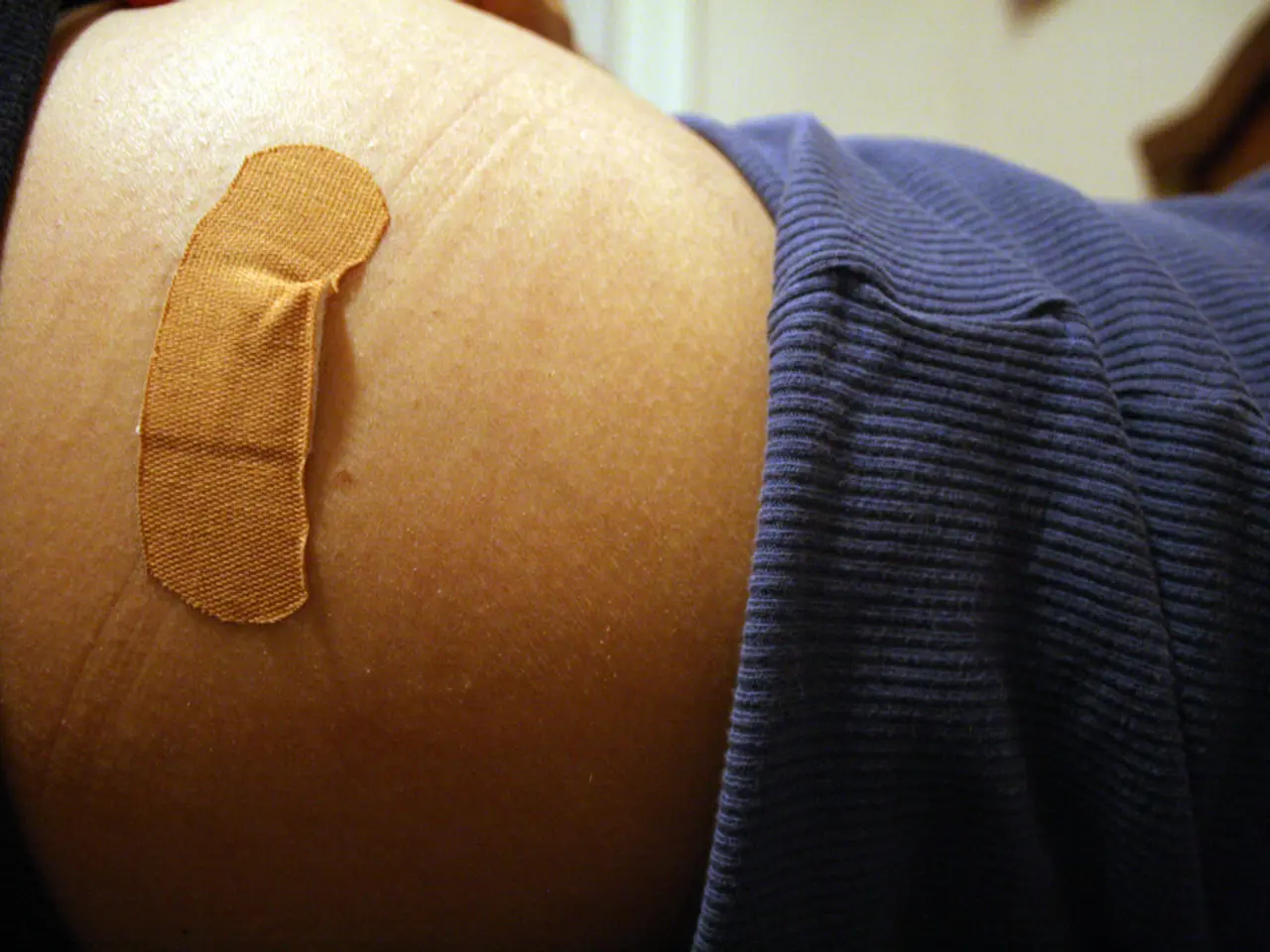Comparing Cosentyx and Humira: An Analysis of Their Key Differences
Cosentyx (secukinumab) and Humira (adalimumab) are two popular biologic drugs used to treat various inflammatory conditions, including psoriatic arthritis, ankylosing spondylitis, and plaque psoriasis. Here's a breakdown of these medications, their administration, side effects, and approved uses in children.
Administration Frequency
Humira is administered subcutaneously every 2 weeks in adults and adolescents, with a standard dose of 40 mg per injection. While the dosing for juvenile idiopathic arthritis (JIA) in children is not explicitly detailed, pediatric regimens typically follow a weight-based schedule, often every other week after an induction phase.
Cosentyx, on the other hand, is administered subcutaneously in children with JIA with an induction regimen of 1000 mg at weeks 0, 2, and 4, followed by maintenance dosing of 1000 mg every 4 weeks. For adults, Cosentyx is typically dosed more frequently during induction (every week for 5 weeks, then monthly), but in pediatric JIA the interval is monthly after the loading phase.
Side Effects
Humira is a TNF inhibitor, and common side effects include injection site reactions, infections (including serious infections), and potential immunogenicity leading to autoantibody formation. Combining with low-dose methotrexate may reduce autoantibody development.
Cosentyx is an IL-17A inhibitor. Common side effects include upper respiratory tract infections, diarrhea, and headache. Long-term safety data in pediatrics are more limited compared to adults, but the drug is generally well-tolerated. The search results do not provide a comprehensive side effect comparison in children, but generally, IL-17A inhibitors like Cosentyx may have a lower risk of tuberculosis reactivation compared to TNF inhibitors like Humira.
Approved Uses in Children
Humira is approved in children for polyarticular JIA (ages 2 and older), juvenile psoriatic arthritis, and pediatric Crohn’s disease (ages 6 and older). It is also approved for pediatric plaque psoriasis and hidradenitis suppurativa in certain age groups, but these indications are not specified in the search results.
Cosentyx is approved by the FDA for JIA in children 6 years and older, specifically those who have failed or cannot tolerate conventional synthetic DMARDs (e.g., methotrexate) as well as TNF inhibitors (e.g., adalimumab, infliximab), and IL-12/23 inhibitors. Search results do not indicate FDA approval for Cosentyx in pediatric psoriasis or other pediatric indications beyond JIA.
Comparison Table
| Feature | Cosentyx (secukinumab) | Humira (adalimumab) | |------------------------|---------------------------------------------------|-------------------------------------------| | Drug Class | IL-17A inhibitor | TNF inhibitor | | Child Approved Uses | Juvenile idiopathic arthritis (≥6 years)[2] | JIA (≥2 years), juvenile PsA, Crohn’s, others | | Administration | SubQ 1000 mg at weeks 0/2/4, then q4 weeks[2] | SubQ, typically q2 weeks (adult/child)[4] | | Notable Side Effects| Infections, diarrhea, headache | Infections, injection site reactions, immunogenicity[4]|
Summary
Both Cosentyx and Humira are immunomodulatory biologics but target different inflammatory pathways (IL-17A vs. TNF-α). Cosentyx is administered every 4 weeks in pediatric JIA after an induction phase, while Humira is typically given every 2 weeks. Cosentyx is approved for JIA in children 6 years and older who have failed other therapies, while Humira is approved for JIA (from age 2), juvenile psoriatic arthritis, pediatric Crohn’s disease, and other indications. Side effect profiles differ, with Humira carrying a risk of serious infections and immunogenicity, while Cosentyx’s safety profile in children is still being defined, although IL-17A inhibitors may have a lower risk of certain infections like tuberculosis compared to TNF inhibitors.
- In the realm of medical-conditions and chronic-diseases, both Cosentyx (a IL-17A inhibitor) and Humira (a TNF inhibitor) are popular biologic drugs used for treating inflammatory conditions such as psoriatic arthritis, ankylosing spondylitis, and plaque psoriasis.
- For administration, Humira is given subcutaneously every 2 weeks in adults and adolescents, while Cosentyx is administered subcutaneously every 4 weeks in children with JIA after an induction phase, and monthly for adults.
- Common side effects for Humira include injection site reactions, infections, and potential immunogenicity, while Cosentyx frequently causes upper respiratory tract infections, diarrhea, and headache.
- In terms of approved uses, Humira is approved for JIA (ages 2 and older), juvenile psoriatic arthritis, pediatric Crohn’s disease (ages 6 and older), and other indications, whereas Cosentyx is solely approved for JIA (6 years and older) in children who have failed or cannot tolerate conventional therapies.
- It's important to consider health-and-wellness aspects, as a comparison table shows that Cosentyx targets the IL-17A inflammatory pathway while Humira targets TNF-α, and that Cosentyx poses a potentially lower risk of certain infections like tuberculosis compared to TNF inhibitors like Humira.
- Science continues to evolve, and further research is needed regarding long-term safety data in pediatrics for Cosentyx, as well as its uses in pediatric psoriasis and other indications beyond JIA.




